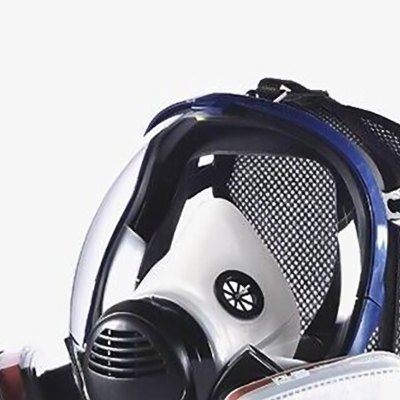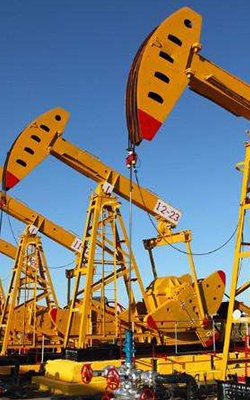The full face respirator is equipped with a PC mask and gas filter boxes, which are convenient and comfortable to wear. A cartridge respirator mask can isolate formaldehyde, chlorine, acetone, alcohols, aniline, carbon dichloride, carbon tetrachloride, and other gases. The full face chemical mask can be applied in the chemical industry, pesticide, spray painting, decoration, and other aspects.

PC spherical anti-fog mask & Mesh fixed headband
- Highly transparent PC face screen, impact-resistant, scratch-resistant, double-layer anti-fog. A gas mask respirator with clear and wide field of vision is suitable for use in various environments.
- A chemical respirator mask is quick to wear and has good airtightness, ensuring that the mesh mask fits tightly to the face. Not easy to slide and gap, and no pressure when wearing.
Food-grade silicone mouth & nose mask
- High-quality silicone mouth & nose mask of full mask respirator, the same food-grade silicone material as baby pacifiers, is comfortable and anti-aging.
- The standard interface of an industrial respirator is easier to install and disassemble, with a variety of filter boxes and filter cottons to choose from.
Application
Respirator masks are widely used in various fields such as military operations, oil and chemical industries, and dust-heavy environments to provide effective protection against harmful particles, gases, and vapors. Industrial respirator masks are also used in working environments such as painting and welding to filter out these particles to ensure workers' breathing safety. In natural disasters or industrial accidents, gas masks can be used to prevent the inhalation of high concentrations of harmful gases and dust.

Oil

Chemicals

Dust

Military
| Model | SISCO-RM-IGM-8100 |
| Product name | Spherical silicone full respirator mask |
| Face screen material | PC |
| Color | Blue-black |
| Material | Silicone |
| Weight | 1kg |
| Head wear | Comfortable mesh type |
| Features | Dust and poison proof |
| Application | Petroleum, chemical industry, mining, pesticide, decoration, chemical experiment |
Note
No. 3 gas filter box: Protects against organic gases such as benzene, formaldehyde, chlorine, acetone, alcohols, aniline, carbon dichloride, carbon tetrachloride, chloroform, methyl chlorine, methyl chloride, nitroparaffin, chloropicrin, etc. Suitable for odor isolation in painting, chemical industry, laboratory, graffiti, decoration, etc.
Respirator mask structure

Q1: What is a respirator mask?
A1: A respirator mask is a type of protective respiratory equipment designed to filter out harmful gases, vapors, and particulates in industrial settings. These chemical masks are commonly used in workplaces where workers are exposed to hazardous airborne substances such as chemicals, toxic fumes, dust, and biological contaminants.
Q2: How does a respirator mask work?
A2: When the user breathes in, air passes through filters or cartridges designed to trap specific contaminants. Gas mask respirator filters can remove dust, fumes, and biological agents, while chemical cartridges absorb toxic gases and vapors. Use fine fibers (like HEPA filters) to trap airborne particles such as dust, smoke, and biological hazards. Cartridges contain activated carbon or special chemicals that neutralize toxic gases and vapors (e.g., organic vapors, ammonia, acid gases).
Q3: What are the types of respirator masks?
A3: Air-Purifying Respirators (APRs): These masks filter contaminants from the surrounding air before the user breathes them in. They do not supply oxygen, so they are ineffective in low-oxygen environments. Powered Air-Purifying Respirators (PAPRs): Often used in asbestos removal, pharmaceutical production, and biohazard environments. More comfortable for long-duration wear. Supplied Air Respirators (SARs): These provide clean air from an external source, rather than filtering the surrounding air. Escape Respirators (Emergency Gas Masks): Designed for short-term use during emergencies.
Tip: Why do you need a respirator mask?
You need a gas respirator mask to protect your respiratory system from harmful substances such as harmful gases, dust, and microorganisms, especially in high-risk situations such as harsh occupational environments, poor air quality, or chemical leaks.
Thank you for buying industrial test and measurement equipment on SISCO.com, all products sold by SISCO and the partner cover a 12 months warranty, effective from the date of receiving the products.
What is covered?
SISCO is responsible for providing free spare parts, and free technical support to assist the customer to repair the defective products until the problem is solved.
What is not covered?
- Product purchased from anyone other than a SISCO store or a SISCO authorized reseller.
- Expendable parts.
- Routine cleaning or normal cosmetic and mechanical wear.
- Damage from misuse, abuse or neglect.
- Damage from use of parts other than SISCO approved.
- Damage from use outside the product’s usage or storage parameters.
- Damage from use of parts not sold by SISCO.
- Damage from modification or incorporation into other products.
- Damage from repair or replacement of warranted parts by a service provider other than a SISCO authorized service provider.
- Damage caused by the application environment not meeting the product usage requirements and the failure to perform preventive maintenance.

